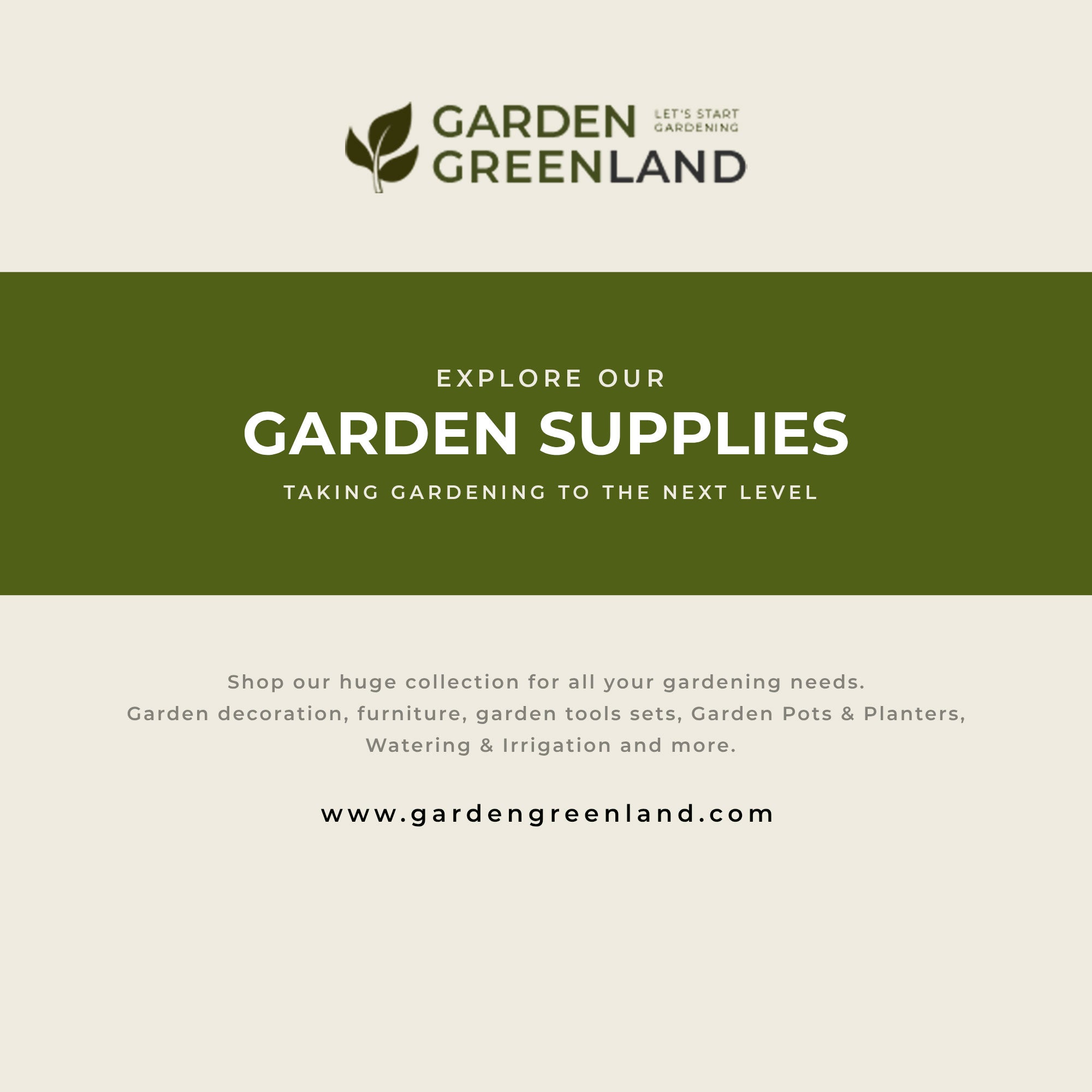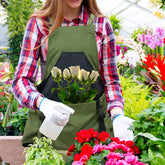What Can I Grow in 10 Gallon Grow Bags? A Comprehensive Guide
Table of Contents
- Introduction
- Benefits of Using Grow Bags
- Best Plants for 10-Gallon Grow Bags
- Tips for Successful Growing in Grow Bags
- Care and Maintenance of Your Grow Bags
- Conclusion
Gardening is not merely a hobby; it’s a way to connect with the earth, nourish our bodies, and cultivate beauty in our surroundings. For many of us, the allure of growing our own food or creating a lush garden oasis is irresistible. However, limited space can often pose a challenge. Enter the grow bag—a versatile tool that has revolutionized the way we garden. If you’re wondering, “What can I grow in 10-gallon grow bags?” you're in the right place!
In this blog post, we will explore the myriad of plants you can successfully cultivate in 10-gallon grow bags, while also highlighting the benefits of using grow bags and how they can enhance your gardening experience. From vegetables to flowers, and even small trees, we’ll cover everything you need to know to make the most of your 10-gallon grow bags.
Introduction
Did you know that gardening can boost your mood and mental health? A study published in the Journal of Health Psychology found that individuals who engage in gardening report lower levels of stress and improved overall well-being. This connection to nature is something we at Garden Greenland deeply value, as our journey began with a passion for the earth and a commitment to redefining the home gardening experience. We believe that everyone deserves to feel connected to nature, and using grow bags is an excellent way to do just that, especially for those with limited space.
In this article, we will dive into the world of 10-gallon grow bags and explore the types of plants that thrive in them, the advantages of using grow bags, and essential tips for successful gardening. By the end, you will have a comprehensive understanding of how to maximize your gardening potential using this fantastic tool.
Why Grow Bags?
Grow bags are made from breathable fabric that allows for excellent drainage and aeration, creating an ideal environment for root development. The 10-gallon size is particularly versatile, offering enough space for a variety of plants while remaining manageable for urban or small-space gardeners. Whether you’re a seasoned gardener or just starting, grow bags can empower you to achieve your gardening goals effortlessly.
What We Will Cover
- Benefits of Using Grow Bags
- Best Plants for 10-Gallon Grow Bags
- Tips for Successful Growing in Grow Bags
- Soil and Fertilization Guidelines
- Care and Maintenance of Your Grow Bags
- Conclusion and FAQs
Let’s dig deeper into the benefits of using grow bags before we explore what you can grow in them!
Benefits of Using Grow Bags
At Garden Greenland, we are dedicated to providing innovative gardening solutions that enhance your experience. Here are some of the remarkable benefits of using grow bags:
1. Enhanced Drainage and Aeration
The breathable fabric of grow bags allows excess moisture to escape, preventing overwatering and root rot. This creates a healthy environment for your plants to thrive, especially in humid conditions.
2. Improved Root Development
Grow bags encourage a dense and fibrous root system by promoting root pruning. When roots reach the edges of the bag, they are air-pruned, preventing the common issue of root circling seen in traditional pots.
3. Temperature Regulation
The fabric of grow bags helps regulate soil temperature, protecting your plants from extreme heat and cold. This feature is particularly beneficial in regions with fluctuating climates.
4. Portability
Grow bags are lightweight and easy to move, making them perfect for optimizing sunlight exposure and managing garden space. If you need to relocate them to catch more sun or avoid harsh weather, it's a breeze!
5. Versatility
10-gallon grow bags can accommodate various plants, from vegetables to herbs and even small trees. This versatility allows you to experiment with different crops based on your preferences and garden space.
6. Eco-Friendly
Many grow bags are made from recycled materials and are reusable, promoting sustainability in gardening practices. At Garden Greenland, we prioritize eco-friendly products, helping you cultivate a garden that is gentle on the planet.
Summary of Benefits
Using grow bags can significantly enhance your gardening experience by improving drainage, aeration, and root development while offering a versatile and eco-friendly solution for growing plants in limited spaces.
Best Plants for 10-Gallon Grow Bags
Now that we understand the advantages of grow bags, let’s explore what you can grow in a 10-gallon grow bag. This size is particularly suited for a variety of vegetables, herbs, and even ornamental plants. Here’s a detailed list of the best plants to consider:
Vegetables
- Tomatoes: Both determinate and indeterminate varieties flourish in 10-gallon grow bags, making them a top choice for home gardeners. They need ample space for their root systems and benefit from the extra room to grow.
- Peppers: Sweet and hot pepper varieties thrive in grow bags. They require a good amount of nutrients and space to grow, which makes the 10-gallon size ideal.
- Cucumbers: Vining cucumbers do particularly well in a 10-gallon grow bag when paired with a trellis, allowing them to climb and save on space.
- Eggplants: These heat-loving plants flourish in the warmth of a grow bag and can produce an abundant harvest throughout the summer.
- Squash: Both summer and winter squash varieties can grow well in 10-gallon bags. Their expansive root systems appreciate the extra room.
- Lettuce and Salad Greens: Leafy greens such as lettuce, spinach, and arugula can be sown in 10-gallon grow bags, allowing for multiple harvests throughout the season.
- Herbs: Culinary herbs like basil, rosemary, and thyme thrive in grow bags, enabling you to have fresh herbs at your fingertips.
Fruits
- Strawberries: These delicious berries can be grown in 10-gallon bags, providing a delightful treat in your garden.
- Dwarf Fruit Trees: Certain dwarf varieties, such as dwarf citrus or dwarf apple trees, can be successfully cultivated in a 10-gallon grow bag for several years before needing to be transplanted.
Flowers
- Marigolds: These cheerful flowers not only add beauty but also help deter pests in your vegetable garden.
- Petunias and Zinnias: Both of these flowering plants do well in grow bags, providing vibrant colors to your outdoor space.
Summary of Plant Options
With a 10-gallon grow bag, you have the flexibility to grow a wide variety of plants, including vegetables, fruits, and flowers. Consider your personal preferences and space constraints when selecting what to grow.
Tips for Successful Growing in Grow Bags
Maximizing your success with 10-gallon grow bags requires some thoughtful planning and care. Here are essential tips to ensure your plants thrive:
1. Choose the Right Soil
Using high-quality potting soil is crucial for grow bag gardening. A mix that retains moisture while allowing for drainage is ideal. At Garden Greenland, we recommend blending organic potting soil with compost and perlite for optimal results.
2. Proper Watering Techniques
Grow bags tend to dry out faster than traditional pots. Monitor moisture levels regularly and water when the top inch of soil feels dry. Use the "water, wait, water" method—water lightly, wait for it to soak in, and then water again.
3. Fertilization
Because grow bags contain a limited amount of soil, your plants may require additional nutrients throughout the growing season. Apply a balanced, organic fertilizer every few weeks to keep your plants healthy and productive.
4. Space Your Plants
Avoid overcrowding your grow bags. Each plant should have enough space to grow without competing for nutrients and water. For larger plants like tomatoes or squash, it’s best to plant just one per bag.
5. Provide Support
For vining plants like cucumbers or tomatoes, include support structures such as stakes or trellises. Establish these supports early to avoid damaging your plants later.
6. Rotate Crops
To maintain soil health and nutrient levels, practice crop rotation. This means planting different types of plants in each grow bag each season to prevent nutrient depletion and pest buildup.
Summary of Success Tips
By choosing the right soil, watering correctly, fertilizing regularly, and providing adequate space and support for your plants, you will set yourself up for a thriving garden using 10-gallon grow bags.
Care and Maintenance of Your Grow Bags
To ensure your grow bags continue to serve you well, follow these maintenance tips:
1. Cleaning and Storage
At the end of the growing season, clean your grow bags by rinsing them off and allowing them to dry completely. Once dry, fold them up for compact storage until the next gardening season.
2. Inspect for Damage
Before the next planting season, inspect your grow bags for any signs of wear or damage. Replace any that are compromised to ensure healthy plant growth.
3. Monitor Soil Health
Regularly check the soil in your grow bags for compaction or depletion of nutrients. You may need to refresh the soil mix or add organic matter to maintain fertility.
Summary of Maintenance Practices
Regular cleaning, inspection, and monitoring of soil health will prolong the life of your grow bags and ensure your plants thrive.
Conclusion
Using 10-gallon grow bags can significantly enhance your gardening experience, offering a practical solution for growing a variety of plants, from vegetables to flowers and even small trees. The benefits, such as improved drainage, enhanced root development, and portability, make grow bags an excellent choice for gardeners of all skill levels.
As you embark on your gardening journey, consider incorporating our premium gardening products at Garden Greenland. We are committed to providing high-quality, innovative gardening essentials to help you embrace your green thumb. Explore our collections, like our Garden Equipment Collection, and discover the tools that will elevate your gardening experience.
FAQ Section
1. Can I grow potatoes in 10-gallon grow bags? Yes, potatoes thrive in 10-gallon grow bags, especially varieties that require more room for their root systems to expand.
2. How often should I water my plants in grow bags? Watering frequency will depend on the climate and specific plant needs, but generally, you should check the soil moisture regularly and water when it feels dry to the touch.
3. What type of fertilizer should I use for plants in grow bags? A balanced organic fertilizer is recommended. You can apply it every few weeks to ensure your plants receive the necessary nutrients.
4. Do I need to provide support for my plants? Yes, vining plants like tomatoes and cucumbers will need support. You can use stakes, cages, or trellises to help them grow upward.
5. How can I ensure my grow bags last multiple seasons? Clean your grow bags at the end of each growing season, inspect them for damage, and store them properly to ensure longevity.
With these insights, you are well-equipped to make the most out of your 10-gallon grow bags and enjoy a flourishing garden. Happy gardening!









